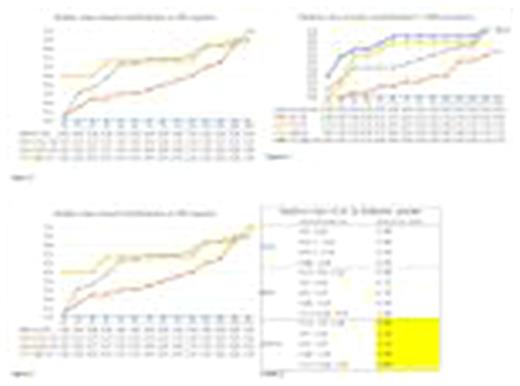Abstract
Objective There are many kinds of prognostic scoring systems of myelodysplastic syndrome (MDS) which are all risk-based stratification systems with their own dominance. IPSS、WPSS and IPSS-R are the most commonly used systems in clinical work in CHINA. So we do this research to explore the significance among this three systems in predicting the prognosis of MDS and to guide the clinical accurate prognosis stratification for personal treatment.
Methods The clinical data of 74 patients with diagnosed MDS according to NCCN from 2014 to 2017 in Wuhan Union Hospital were retrospectively reviewed, the prognosis was evaluated according to international prostate symptom score (IPSS), World Health Organization classification-based prognostic scoring system (WPSS) and revised international prognostic scoring system (IPSS-R). Then we compare the fatality rate of different stratifications in each system from the 0th month to the 60th month and contrast the 2-year fatality rate of each stratification.
Results The difference of median survival time between different groups of prognostic scoring system was statistically significant . The survival curve of WPSS had more intersections between each group, IPSS-R prognosis had less intersections. For low risk group, prognostic evaluation of IPSS and WPSS were poor, IPSS-R was the best way to predict the prognosis(Figure1/2/3 & Table 1).At the same time, we find that TP53 gene do strongly relate with complex karyotype at an odds of 83.3% which all have an OS less then 1 year; and the gene of ASXL1 correlates with a longer OS.
Conclusions All the three scoring systems can well predict the prognosis of patients with diagnosed MDS, and IPSS-R has more advantages. Integrated using 3 scoring system and taking the condition of gene mutations in clinical work is more favorable for clinical prognosis evaluation of MDS.
No relevant conflicts of interest to declare.
Author notes
Asterisk with author names denotes non-ASH members.


This feature is available to Subscribers Only
Sign In or Create an Account Close Modal